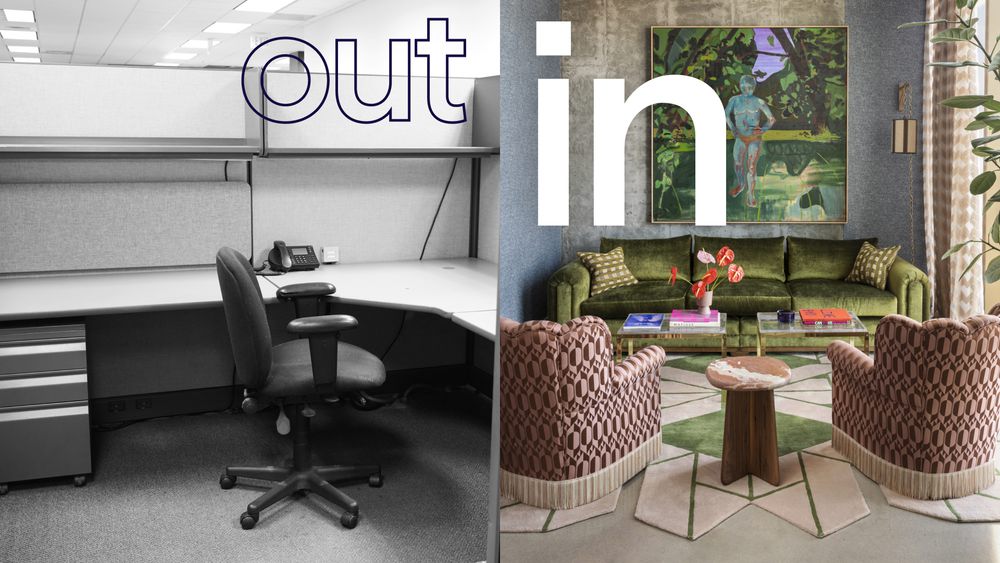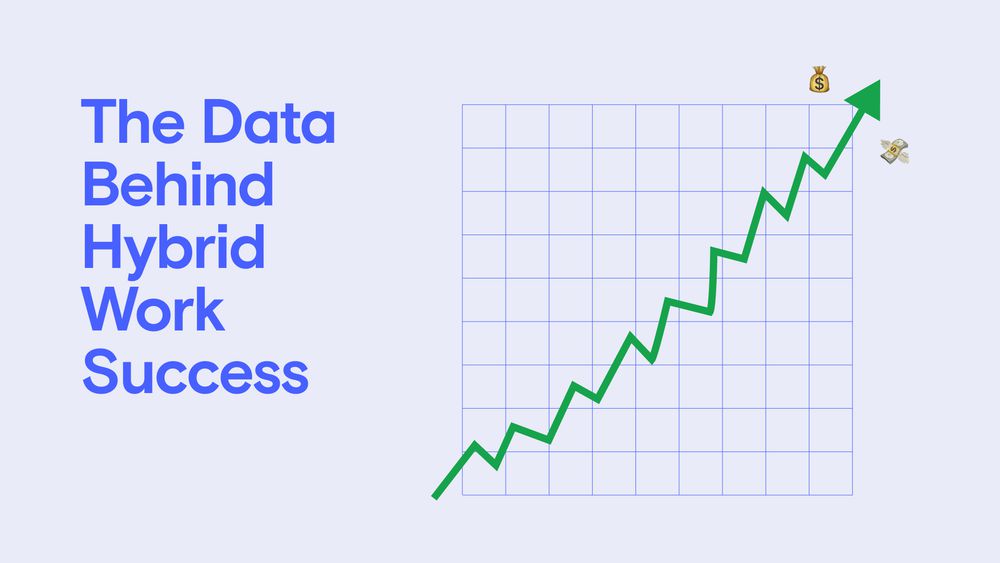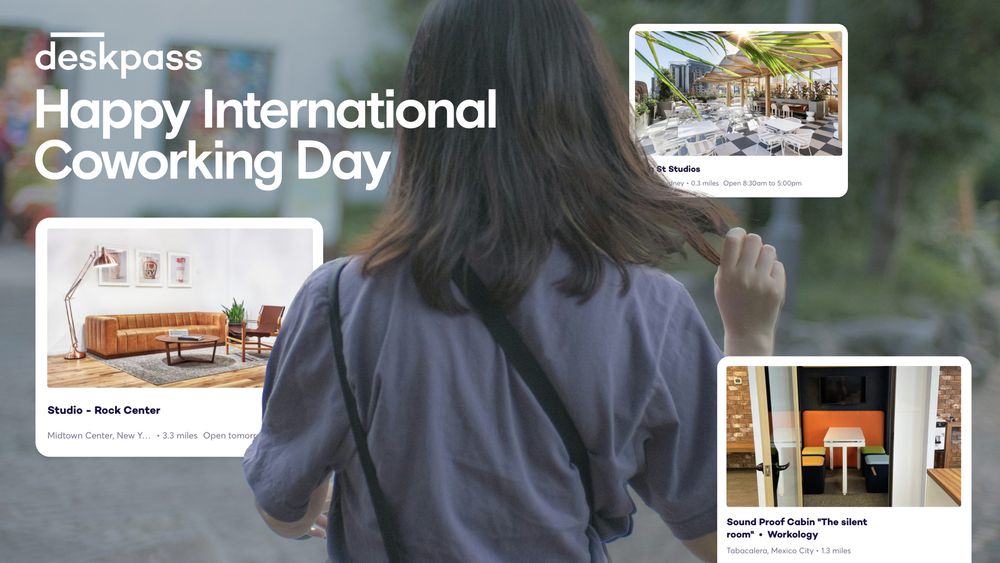Onboarding is more than logistics—it’s the beginning of a critical relationship between manager and new hire. First impressions matter, as does follow-through. Inspired by our own remote onboarding process spearheaded by Deskpass co-founder and Chief People Officer, Nicole Vasquez, this guide will help in shaping your own unique onboarding journey.
Our approach
Deskpass takes a 'People First’ approach, which means the goal is that every teammate is seen and heard, that their skills are being utilized, and that they feel supported in the work they do. Without this approach, Deskpass could not maintain harmony with our members, our partner workspaces, our service providers, and most importantly with our fellow teammates.
Our goal is for every teammate to feel seen for the unique person they are and the skills that they have, and to feel supported in the work that they do here at Deskpass.
Build momentum early and often
There’s a lot of organizing to do before welcoming a new hire to the team. These steps save time and make for a smooth onboarding experience.
Plan ahead
There’s a learning curve with any new hire, and getting all necessary tech set up ahead of time can alleviate any first-day jitters they may have. Consider sending electronics in advance of their start date—things like a new laptop, monitor or smartphone. This allows the new hire to get set up and have one less thing to customize on their first day.
That said, for security reasons, you don't want someone logging into systems and software too far in advance. We only send security credentials to our systems and software on their first day, after they provide their ID and personal verification documents.
Invite them to collaboration tools in stages
It takes some time to settle in, learn the ropes and gain a deep understanding of your role within the company. One thing you can do for new hires is invite them to all collaboration tools and other platforms they’ll be using on the job in stages and at the right time so as not to overwhelm.
The day before they start, we send an invitation for them to set up their Deskpass email. Then, we send invitations to that email address for any basic tools they’ll need on the morning of their first day. For example, we invite them to Notion because our self-guided onboarding is located there. On the morning of day two, they will dive deeper into all our tools. Later that afternoon, they will set up calls with people in other departments (more on this below).
Set clear expectations and communicate onboarding goals
Effective communication is extra important for remote teams, as are regular check-ins where you can answer any questions your new hire may have during those first few months.
Define role and responsibilities
At Deskpass, we want every team member to understand the requirements of their role within our company; at the same time, we encourage them to explore and seek out projects and opportunities that excite them. Yes, they were brought on to do a specific role and that comes with responsibilities; however, we encourage each new employee to grow in their career and journey at Deskpass.
We remind new hires that as a collaborative team that helps each other out, things may be added to their plate when needed. When that happens, we will take things off so as to optimize operations and focus on growth. We have them review their role description, their list of responsibilities and our metrics for success (as a scorecard).
At this point in our company’s remote onboarding process, we have new employees note any listed items that they need clarity on, as well as other areas of interest where they would be interested in contributing as our team grows.
Familiarize them with the company ins and outs
Give your new hire the time and tools to understand your company’s mission, values and purpose on a deep and meaningful level. Start with the basics: who you are as a company, where you came from and where you are going, how your company operates, who your target audience is, and so on.
We direct new employees to our marketing site, where they can explore individual and team plans, filter through workspaces and read through our FAQ and other informative materials. We ask them to set up a Deskpass account and make a few mock bookings.
With this more interactive approach, they can integrate the knowledge they’ve learned and see how everything works together, especially beyond their own department. We believe it's important to fully understand what the user perspective is and to learn about the company as an observer.
Create 30, 60, 90 day measurable goals
We've been using the EOS Model for years and think it's a great way to stay focused and make measurable, meaningful progress each quarter, and year after year. This model helps us to compartmentalize all the things we need to get done in the short term and long term, label those things accordingly, and place them in the appropriate department for completion. This gives us an exact understanding of what needs to get done, when it needs to get done, and how much of a priority it is.
Collect feedback along the way
Feedback is a huge part of our onboarding process and we collect feedback in a few different ways. During the self-guided process, new employees fill out a Q&A and at the end of their onboarding, it is reviewed with their manager. This is to make sure the manager can follow up on any questions they have or requests for additional training.
We also schedule video call check-ins each morning of their onboarding. On their final day of onboarding, Nicole has a video call with them to congratulate them on finishing onboarding and to just see how they're feeling. As always, we ask if anything was unclear or if they need anything else to better do their work.
Foster a collaborative company culture
Everyone has their own unique set of strengths and skill sets that, as a team, make the entire unit stronger. Fostering a collaborative and supportive company culture is paramount.
Get a baseline assessment
Before getting to know the rest of the team, we invite new hires to complete an optional Gallup StrengthsFinder self-assessment exercise. This assessment is a gift to them, it's not shared with anyone on the team, and is not used for tracking or performance.
As a ‘People First’ company, we believe in amplifying each team member’s strengths rather than focusing on their weaknesses since they were invited to join our team specifically for their strengths. . We love giving our new teammates a gift to learn about how they work and discover their top five strengths as an individual.
Introduce them to the team
After new employees complete this exercise, we ask that they create their profile on our online team directory. Every member has a profile there that anyone at Deskpass can view. For both existing employees and new hires, this is an accessible way to learn about the people you work with day-in and day-out, but may not have had the opportunity to meet in person.
We encourage our team to get creative with their profiles, and to include things non-work related that interest them (i.e. top travel destinations, favorite cuisine, hobbies, and so on). When new employees complete their profile, we invite all teammates to review it so they learn more about the person which encourages teammates to reach out to the new employee to comment on their shared interests, something they found interesting in their profile, etc.
Allow them to form 1:1 relationships
As with any distributed team, communication is key. As part of our onboarding process, we ask that new hires schedule 15-minute 1:1 video calls with every member of the team. Because of the team directory, teammates already know a bit about the other person in case they're worried about conversation starters.
Schedule recurring 'All Team' meetings
Whether in-person or via video call, team meetings serve as a community builder. In our case, we host monthly Team Town Hall meetings via Zoom (joining is optional but encouraged) where team members can interact and get to know one another better.
The focus of the Town Hall is to be with each other. It’s a time where we share what we’ve been working on and what’s on our minds professionally or personally, where we align on where the company is heading and how we’re going to get there together. It’s also an opportunity to pitch ideas or give suggestions to improve Deskpass for all.
Utilize helpful onboarding tools
There are so many tools out there that can help meet your onboarding goals. We’ve featured a few of our favorites below.
Stay organized with Notion
As a team, we basically run on Notion and think of it as our virtual workspace. Our team directory is located here, as is our marketing calendar, onboarding journey and pretty much everything else. Notion is built to empower every team and solves problems unique to every function, from product and engineering to design and sales.
We find that this one tool brings clarity to our team as a whole. Everyone can see the big picture in the format and layout that makes sense for them. Whereas it’s easy to get lost in Slack updates (re: why we set up guidelines to aid in clear, concise communication), Notion is like a team’s long-term memory. We also like that you can embed other apps our team uses within Notion pages, such as Google Drive and Figma.
Communicate through Slack
Slack is our main form of communication and we pride ourselves on being clear, efficient, and thoughtful with our communication. It's a great way to communicate with our broader team throughout the day asynchronously and an easy tool to escalate essential issues throughout the team immediately. With such power comes responsibility and an easy way to fatigue your colleagues with news and requests that are good to know, but they don't need to worry about right now.
To help combat Slack fatigue and use it as a tool, we have a few guidelines to put into play. One guideline is to limit direct messages to three people because often-times, if more people are required to be looped in a conversation, it warrants the usage of a channel related to that subject. All our team channels must be public, and our default communication takes place in these. Private channels are best limited to discussions of sensitive or confidential matters.
Set goals with Traction
The software we use to run our weekly team meetings, set and track company goals and individual rocks, review key metrics, and share important news. As part of the EOS (Entrepreneurial Operating System) model that we follow, Traction empowers focus, discipline, and accountability throughout the company so that everyone executes on that vision.
Invest in a ‘Head of Remote’ leadership role
According to Zenefits, it’s likely that 30% of the workforce may be remote by the end of 2021. While most employees note that they are happier with a hybrid work arrangement, communication can get tricky.
Hiring a Head of Remote Work can help teams better adjust to the ‘new normal’ of distributed work. This person is in charge with streamlining communication and project management, making sure employees are productive but not exhausted, and providing all-around support to hiring and retaining remote talent.
Companies like GitLab, Facebook and Quora were early to hire a Head of Remote work, with many others following suit. Between August and November 2020, leadership roles that were remote increased from 2% to 12%. Capgemini reported that in the next 2 to 3 years, 30% of organizations expect more than 70% of their employees to work remotely.
There are many benefits of hiring a Head of Remote Work. They streamline operations and make sure that employees are set up with all the tools needed to do their jobs. They are intuitive problem solvers, which in turn eliminates tension and boosts productivity among team members. They’re in charge of coming up with team-building activities like 1:1 chats, interactive workshops or virtual team happy hours.
How Hybrid Work Can Help
Hybrid work—a flexible work style that allows employees to work from the office, coworking space or at home—can contribute to a successful onboarding experience.
Allows for in-person interactions and meetings
If the pandemic has taught us anything, it’s that human connections matter. The way teams communicate has shifted significantly over the past year. As we noted here, in-person meetings were replaced with video calls and many video calls were transferred over to email.
For distributed teams working remotely, in-person meetings are still important, even if less frequent. Through Deskpass, individuals and teams can reserve meeting rooms by the hour, half day, or full day. Private offices are also available and vary in size to meet your team's needs.
Higher retention rates
When it comes to retention, employee happiness plays a big role. According to an article on WEAL TechWire, 65-percent of employees prefer a hybrid work arrangement that includes working remotely, with 46-percent of those respondents being above the age of 55.
Another finding was that employees who earn a salary of more than $150,000 are more likely to seek hybrid work environments. People want more freedom in their lives, and this includes when, where and how they work. The happier the employee, the better they tend to perform.
Diversity enhances company culture
As we covered in this post, hybrid work expands the talent pool exponentially. In a work trends breakdown from Microsoft, they found that remote job postings on LinkedIn increased more than five times during the pandemic.
Furthermore, forty-six percent of remote workers surveyed said they were planning to move to a new location because they could now work remotely. “People no longer have to leave their desk, house or community to expand their career, and it will have profound impacts on the talent landscape.”
Location bias is also less divisive. Currently, cities like New York and San Francisco are among the country’s ten most expensive cities, as well as being hubs for the technology, marketing and finance industries. Therefore, the most coveted companies base their headquarters in these locations. Now, with hybrid work, employers can find and retain top talent without requiring that they relocate.
Less loneliness levels and more opportunities to connect
Mental health in the workplace is often overlooked, but should be taken as seriously as physical wellbeing. The CDC notes that 1 in 5 American adults experience mental health problems, with 71% reporting at least one symptom of stress. Hybrid work has been shown to reduce stress levels, encourage a healthy work/life balance, boost mood and increase productivity.
Whether your team works remotely full-time or comes together for monthly meetings, adopting a flexible work arrangement allows for networking opportunities. We’ve had members tell us that they’ve secured new work from the contacts they make through coworking and one couple even got engaged after meeting at a shared workspace.
Easier set-up process
When you sign your team up for Deskpass, they’ll get instant access to the best workspaces in their area (and other locations when they travel). Our payment structure is flexible and with you in mind. There are no monthly commitments and it’s pay-as-you-go.
Through our portal, you can track usage in real time. View and manage expenditures, accounting and expense tracking data. You can also hand-pick the spaces your team can access and what kind of inventory they can reserve: desks, meeting rooms, and/or offices, and many more customizations to meet your needs and budget?
The Bottom Line
Deskpass is revolutionizing the way humans work by powering the freedom and flexibility to work remotely, wherever that may be. In taking a ‘People First’ approach, we ensure that our team has the tools to thrive regardless if we're in-person or working remotely. This sense of harmony extends beyond our team and into all of our working relationships, from service providers and thousands of partner spaces on our network to teams large and small.



